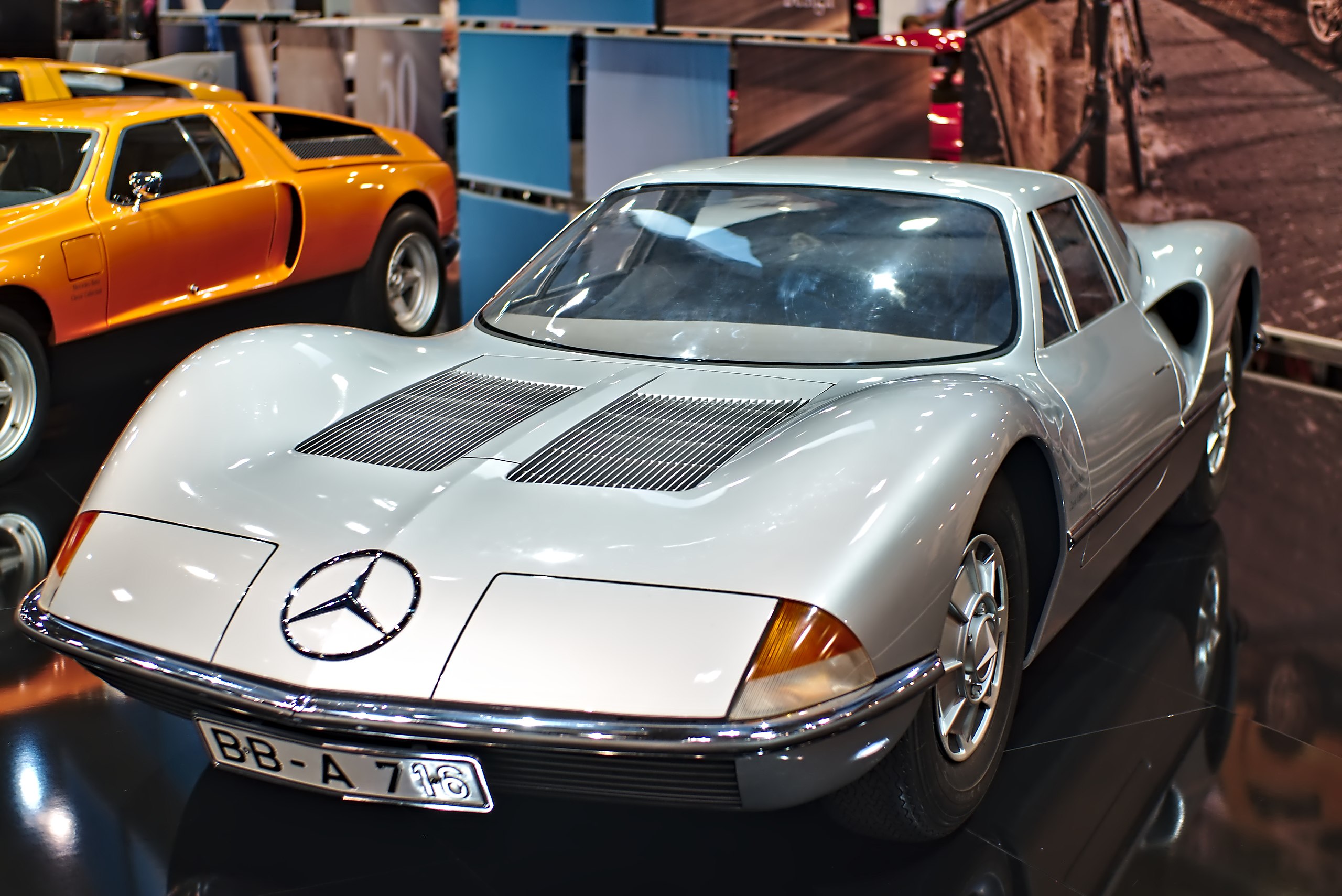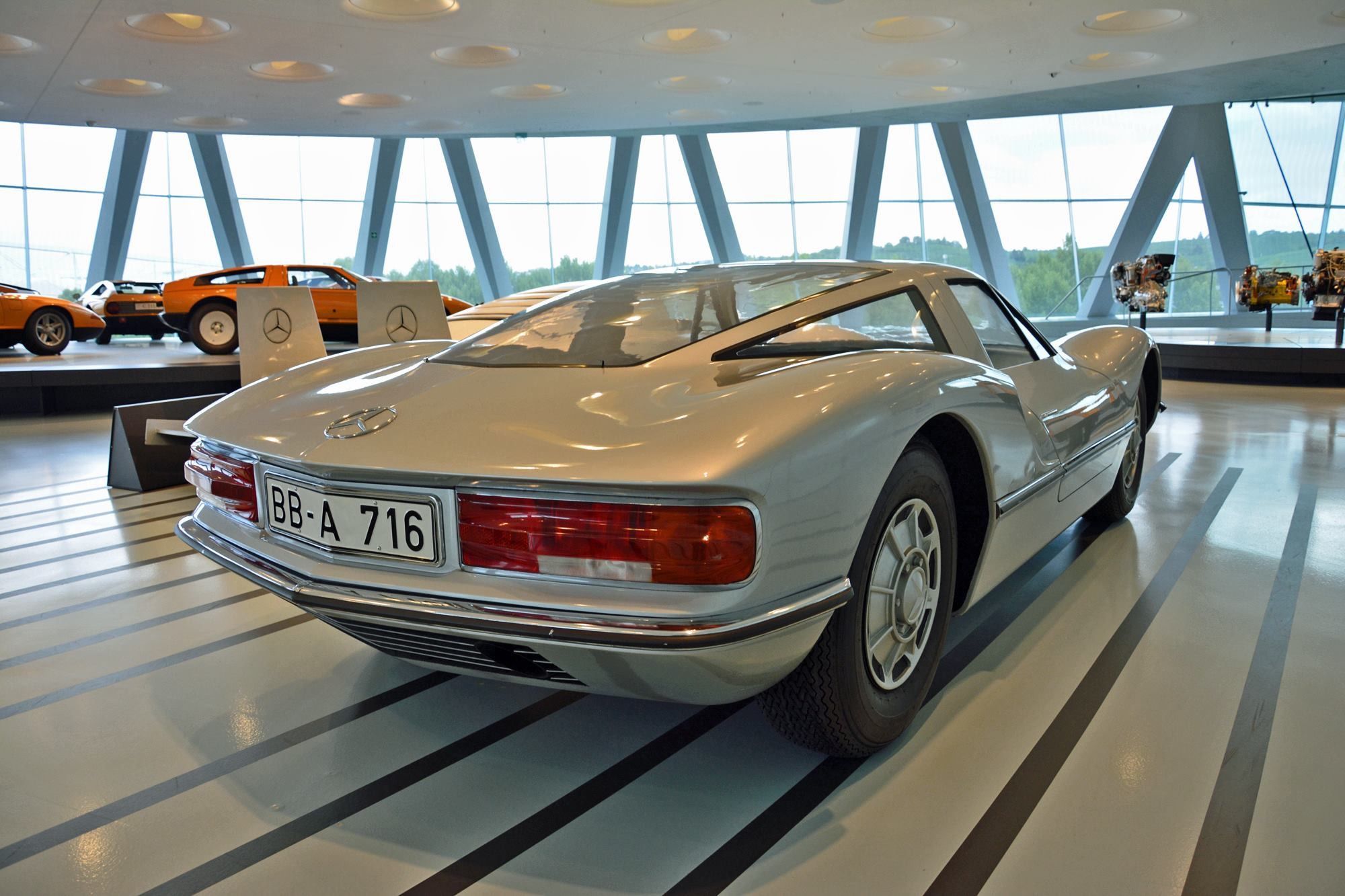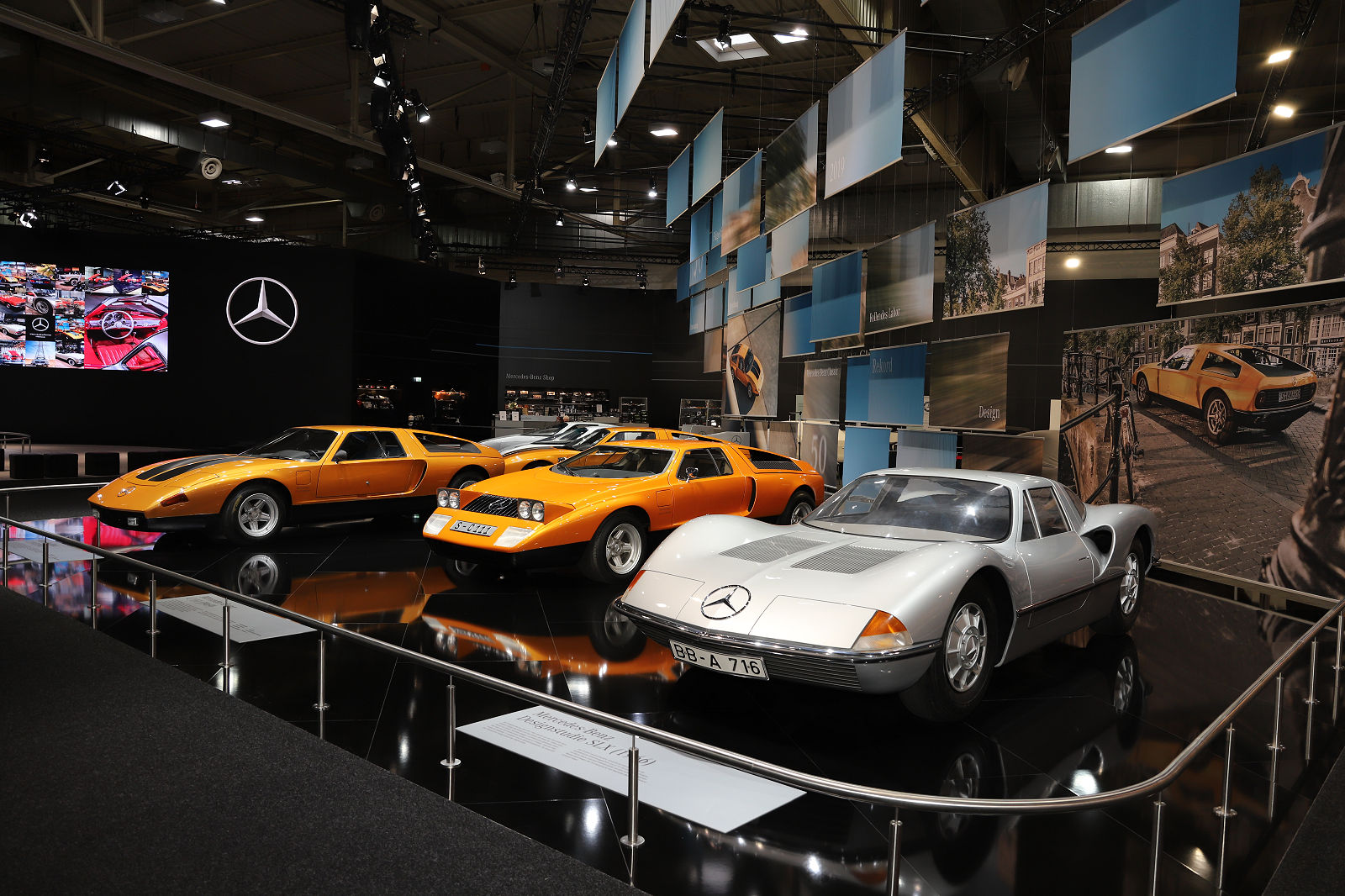Photo credit: Daimler, Mercedes-Benz, Wheelsage
Porsche’s idea of producing winning racing cars with rear engines during the 60s – think of the 550 RS – was copied by many car manufacturers both for the track and for the road. Ferrari, with the 250 P, Abarth with its small Sports cars and Ford with the GT40, as well as Porsche itself with the 904, got the Mercedes technical management thinking too. After retiring from racing after the tragedy at Le Mans in 1955, the 300 SL, the famous “Gullwing”, was the last-remaining symbol of the sportiness of the three-pointed star.
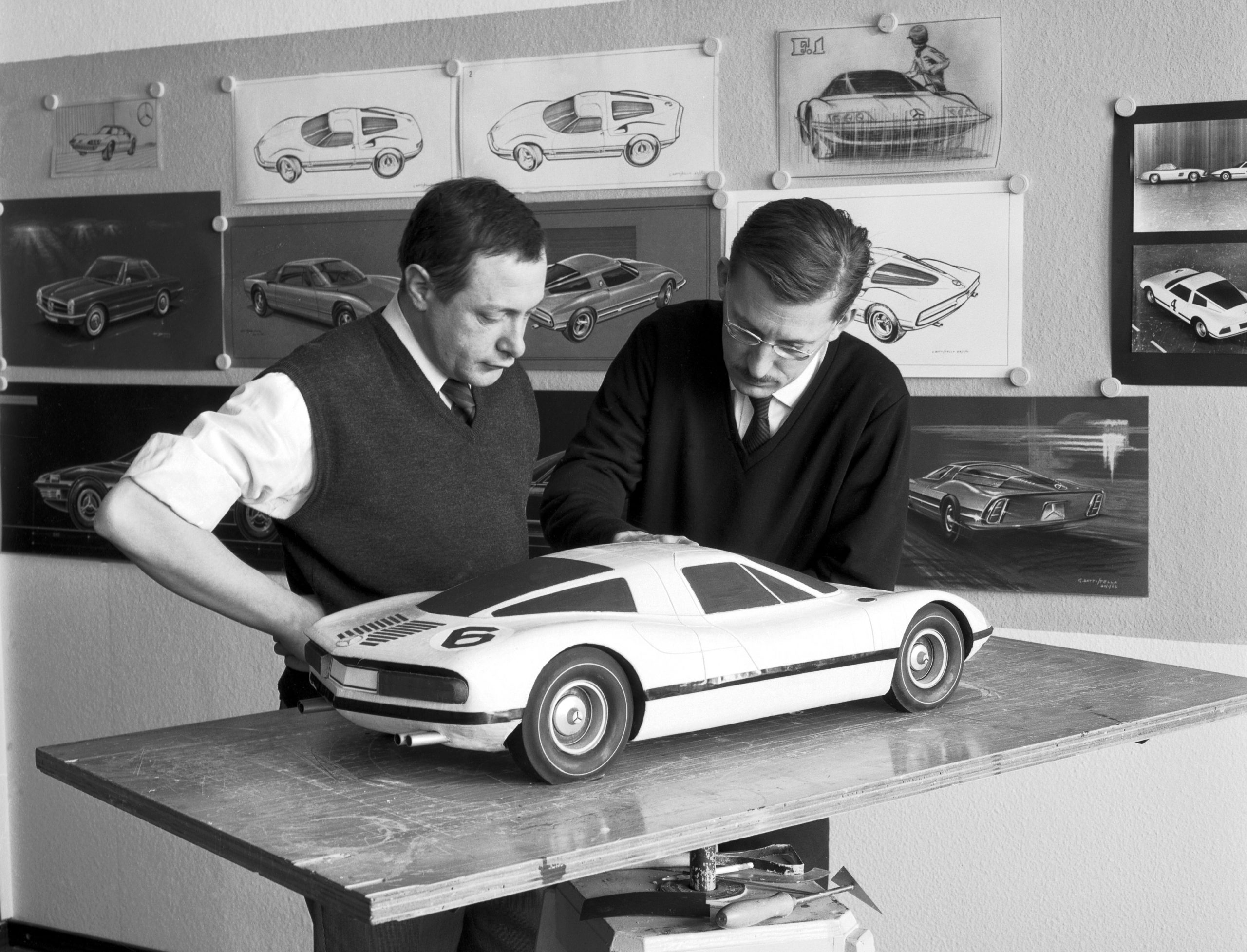
It was a question of understanding what style, as well as what technology, a rear-engined sports Mercedes dedicated for road use should adopt. By 1962, a team led by the famous designer Paul Braq, who had designed the Pagoda and the Italian Giorgio Battistella who came from the Turin-based OSI, had already drawn up the first sketches that took four years to become a 1:1 scale model, which they presented to the board. Unfortunately, they had no luck, despite positive tests in the wind tunnel, also because of recent changes in the technical direction of the company which, in those years, was more concentrated on innovative forms of engines such as the Wankel.
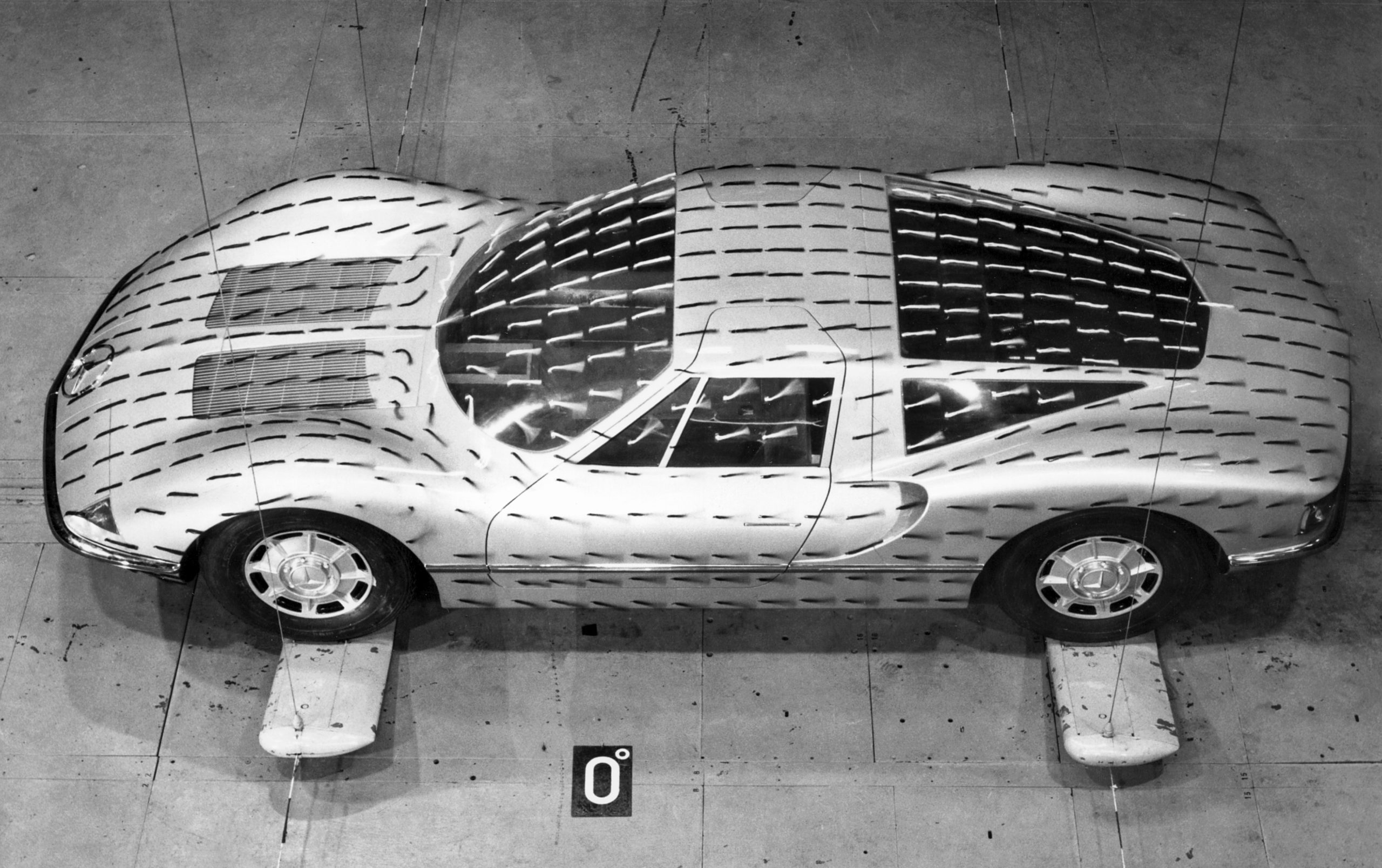
In terms of style, creating a model capable of competing against the 300 SL was an arduous task. The distinguishing element of the model is the distribution of the masses, with its shorter nose and a longer, tapered tail to accommodate the engine. The car also introduced several innovations, including retractable headlights, and the bumper that was integrated into the car body and wraps all the way around the vehicle on the sides and rear, and the generous front grilles that are the most “Mercedes” part of the prototype.
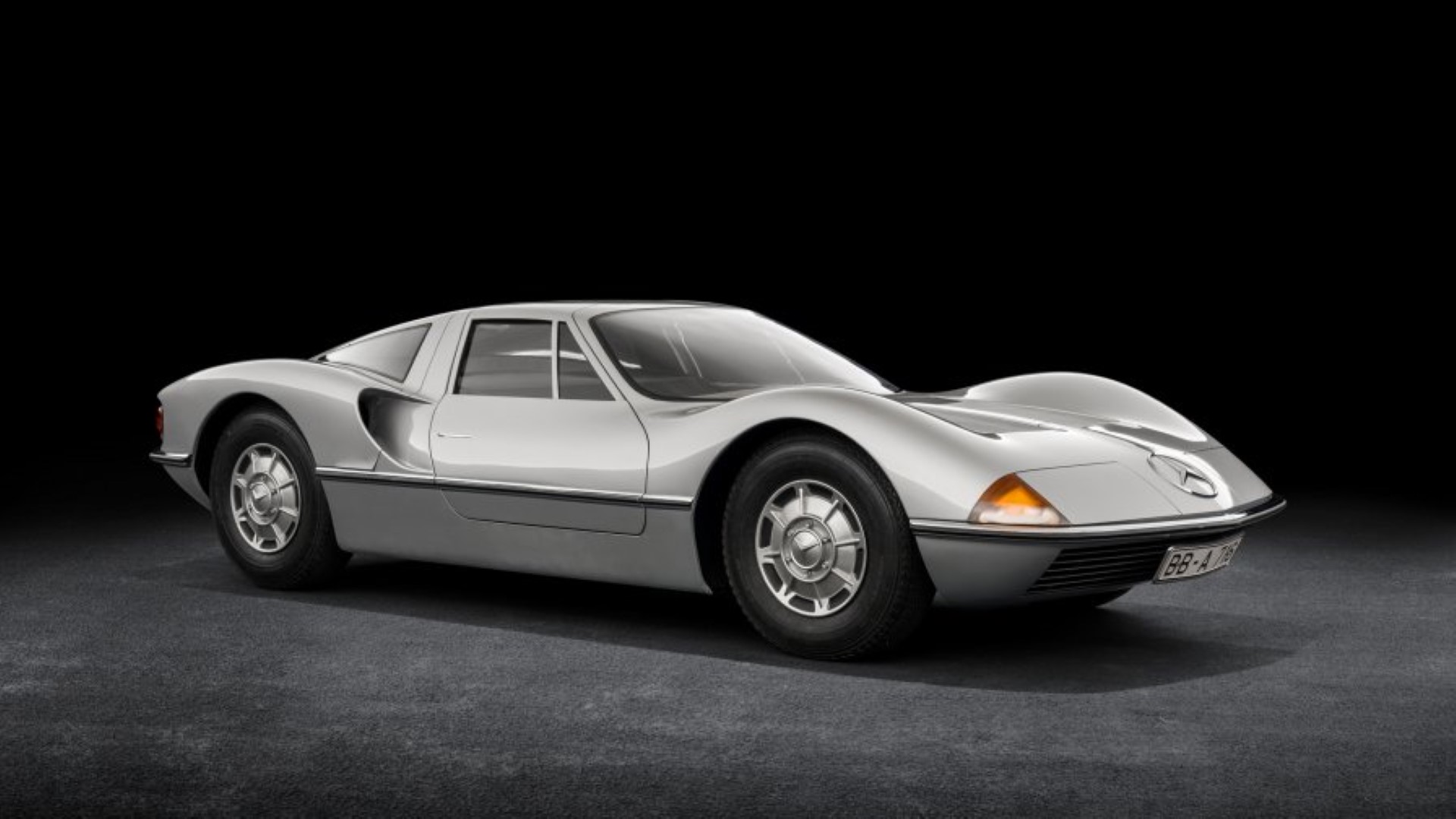
What is decidedly not Mercedes is the rear section with the large side air intakes and the slightly arrow-shaped tail. The visionary project was shelved, but in reality, it paved the way for a series of prototypes that have played a tangible role in the development of the brand as we will see next Saturday.
